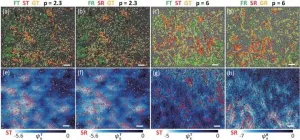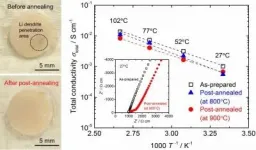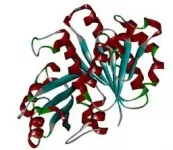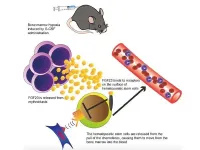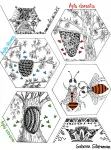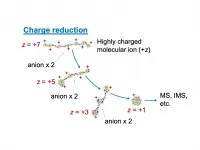Improving long-term climate calculations
A new method reduces uncertainties in computer model estimations of climate change over thousands of years.
2021-01-19
(Press-News.org) Climate researchers have found a simple but efficient way to improve estimations of ultimate global warming from complex climate models. The finding is relevant for the evaluation and comparison of climate models and thus for accurate projections of future climate change - especially beyond the year 2100. The study is published in Geophysical Research Letters by Dr. Robbin Bastiaansen and colleagues at the Institute for Marine and Atmospheric Research Utrecht, Utrecht University, The Netherlands. The work is part of the European TiPES project coordinated by the University of Copenhagen, Denmark.
Complex climate models are rarely used to simulate the effect of global warming for a given amount of CO2 beyond a couple of centuries into the future. The reason for this is twofold. First, even on a supercomputer, such a model must already run for months to obtain a 150-year projection; reaching the end of a long simulation is therefore not practical. Second, policymakers are mainly concerned about how much climate change a given amount of CO2 will cause within the coming decades.
Earth warms for more than 1000 years
In the real world, however, temperatures continue to go up for more than a thousand years after CO2 is added to the Earth system. A typical climate model simulation therefore estimates less than half of the summed global warming. That is a challenge because, in order to improve models, it is necessary to compare and evaluate models. The final global mean temperature from a given amount of CO2 is an important parameter in the evaluation of a model.
The traditional way of solving this problem is to take the two most predominant results (called observables) from the simulation of the first 150 years and use these to estimate at which global mean surface temperature a full simulation would have ended. The two observables most often used are the global mean surface temperature and the radiation imbalance at the top of the atmosphere. This leads to a rather good estimation but the approach introduces considerable uncertainty - mainly underestimating total global warming.
More accurate estimates
However, an advanced climate model produces a multitude of other data on, for example future ocean currents, weather patterns, sea ice extend, ground color, climate belts, precipitation, and many more.
"And what we did, was add another observable on top of the two traditional ones. That is the idea. If you use additional observables, you will improve estimates over longer time scales. And our work is proof that this is possible," explains Dr. Robbin Bastiaansen.
In the best-case scenario, the new method halved the uncertainty compared to traditional methods.
The work is expected to be useful in assessing tipping points in the Earth system, as studied in the TiPES project, funded by the EU Horizon 2020.
INFORMATION:
[Attachments] See images for this press release:

ELSE PRESS RELEASES FROM THIS DATE:
2021-01-19
A system that uses flexible, breathable magnetic skin allows people with severe quadriplegia to move around and choose their surroundings. Developed by KAUST researchers, the high-tech system relies on the user's facial expressions to accomplish a wide variety of tasks, from moving down the street to using an elevator.
There are a wide variety of assistive technologies for people with quadriplegia, but most systems are not suitable for patients with severe quadriplegia as they often rely on head or neck movements to work. For these patients, the options are limited to camera, tongue control, voice-assistant and neural detector systems. But these either offer a limited range of gestures or are not compatible with outdoor applications. Some also require invasive attachments or ...
2021-01-19
Naltrexone, used either alone or together with disulfiram or acamprosate, is associated with a decreased risk of hospitalization due to alcohol use disorder (AUD) when compared with non-use of AUD drugs, a new register-based study shows. The same associations were noticed for hospitalization due to any cause. Disulfiram use and polytherapy with two or more drugs indicated for AUD was associated with a decreased risk of hospitalization due to alcohol-related somatic causes. None of the studied medications were associated with mortality or work disability (sickness absence or disability pension). The study was published in Addiction.
Benzodiazepine use linked to harmful effects
As benzodiazepine use is common among persons with AUD, the ...
2021-01-19
Various glass materials have been essential to the development of modern civilization due to their advantageous properties. Specifically, glasses have a liquid-like disordered structure but solid-like mechanical properties. This leads to one of the central mysteries of glasses: "Why don't glasses flow like liquids?" This question is so important that it was selected by the journal Science in 2005 as one of 125 key, unanswered scientific questions, and one of 11 unsolved important physical issues.
We can hardly observe the movements of atoms at a ~0.1 nanometer length scale and a ~1 ...
2021-01-19
Overview:
A research team in the Department of Electrical and Electronic Information Engineering at Toyohashi University of Technology and the Department of Chemistry at University of Calgary has investigated the effect of post-annealing for healing Li garnet solid electrolyte degraded by the growth of Li dendrites. The ionic conductivity of the annealed solid electrolyte was slightly lower than that of the electrolyte before annealing but was retained above 10?4 S cm?1 at room temperature. The electrochemical results obtained indicate the possibility of reusing the solid electrolyte degraded by the growth of Li dendrites in another all-solid-state Li battery.
Details:
A ...
2021-01-19
Overview:
The research team of the Department of Computer Science and Engineering at the Toyohashi University of Technology and the Institute of Food Biotechnology and Genomics at the National Academy of Sciences of Ukraine have proposed a new drug to treat tuberculosis (TB), utilizing the state-of-the-art molecular simulations. This drug may inhibit the cell division of Mycobacterium tuberculosis (M. tuberculosis) and suppress its growth. In addition, because this drug acts on the enzymes secreted by M. tuberculosis instead of acting on M. tuberculosis itself, M. tuberculosis ...
2021-01-19
"The real voyage of discovery consists not in seeking new landscapes, but in having new eyes."
Scientists would vouch for this statement because scientific pursuit has the habit of offering chance discoveries if we think about things differently.
In the lab of Arati Ramesh at the NCBS, the team loves to spy on the structure and sequence of Ribonucleic acids (RNAs; molecules that decrypt an organism's genetic code into protein messages). During one such instance, graduate students in Arati's lab were peering at a family of nickel and cobalt (NiCo RNAs) sensing bacterial RNAs that have a clover leaf-like structure. ...
2021-01-19
A Kobe University research group including graduate student ISHII Shinichi and Associate Professor KATAYAMA Yoshio (both of the Department of Hematology, Graduate School of Medicine) have discovered that fibroblast growth factor-23 (FGF23) produced by erythroblasts (cells that are the precursors of red blood cells) promotes the movement (mobilization) of hematopoietic stem cells (*1) into the peripheral blood. Up until now, FGF23 has been known for the role it plays in the kidneys as a hormone which regulates phosphate concentrations throughout the body.
It is hoped that this discovery will enable new strategies to be developed for harvesting hematopoietic ...
2021-01-19
It is early in the morning. Ebi and his colleagues try not to twitch as they stare intently at a rectangular box filled with sugary treats. These aren't for them, but for the honey bees that they study. The tiny buzzers toggle between the sugar 'feeder' and the hive, which are a few metres apart. Interestingly, the bees that visit the feeder aren't secretive about this new found food source. They graciously advertise its location to their nest mates and over time more bees are seen buzzing to the feeder.
This behavior has been observed and researched for decades; but still, the question of how bees communicate within the noisy quarters ...
2021-01-19
Mass spectrometers (MS) have become essential tools in chemistry and biology laboratories. The ability to quickly identify the chemical components in a sample allows them to take part in a diverse array of experiments, including radiocarbon dating, protein analysis, and monitoring drug metabolism.
MS instruments work by giving the analyte molecules an electric charge, and shooting them through a region of space with a uniform electric field, which curves their trajectory into a circle. The radius of the circle, which depends on the ratio of the molecule's mass to its charge, is detected and compared with known samples. Because the method can only measure this ratio, not the mass itself, excess charges can lead to inaccurate or ambiguous results.
Now, a team of researchers lead ...
2021-01-19
"Stripy zebra, spotty leopard, ...". Kids never become bored pinpointing animals based on their unique body patterns. While it is fascinating that living creatures develop distinct patterns on their skin, what may be even more mysterious is their striking similarity to the skin of frozen liquid metals.
Pattern formation is a classic example of one of nature's wonders that scientists have pondered for centuries. Around 1952, the famous mathematician Alan Turing (father of modern computers) came up with a conceptual model to explain the pattern formation process of a two-substance system. Such patterns are also called Turing patterns thereafter.
Pattern formation is also commonly adopted by manmade systems and this is especially true in the ...
LAST 30 PRESS RELEASES:
[Press-News.org] Improving long-term climate calculations
A new method reduces uncertainties in computer model estimations of climate change over thousands of years.


